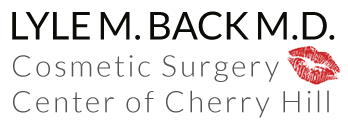Will You Still Feed Me When I’m 64?
Are you a proud and longstanding member of the “Baby Boomer” generation? If you were born between 1946 and 1964, you are a baby boomer. Baby boomers are currently all between the ages of 47 and 65. Baby boomers are a very unique group – they are the largest generation in American history, currently totaling some 77.6 million people and comprising about 15% of the population! On January 1st 2011, the first of the baby boomers began turning 65. Since then, approximately 10,000 people a day have been turning 65. And every single day, 10,000 more people will continue to turn 65 – for the next 18 years! By the year 2030, every member of the baby boomer generation will be age 65 or older. This will result in more than double the number of people in the U.S. who are age 65 or older at present! By 2030, an incredible 20% + of our population will be age 65 – traditional retirement age – or older!
The baby boomers have considerable influence and impact upon the U.S. economy, currently representing more than 50% of all consumer spending. Overall spending will likely go down as the boomers’ incomes become more dependent on retirement funds. That will not be very good for the economy. And what about those retirement funds? Just as more and more of this group enters retirement age, pension plans have far less dollars in them than they should, all investments are down and our Federal Government and Social Security is more financially strapped than ever. Strike two against economic stability. It gets worse. Consider that the economic health of all retirement plans, including Social Security, really depends upon the ratio of those working (i.e. those contributing money to the plan) to those retired (i.e. those taking money out of the plan). In 1950, the ratio was 16 workers for every one retiree. By 2010, this ratio had dropped to 3 workers to every retiree. Projections for 2030? 2 workers for every retiree. It doesn’t exactly inspire confidence in the concept of a retirement fund does it? And considering what is happening right now in general in the financial world at home and abroad, could this tsunami of retirees be coming at a worse time?
Baby boomers also currently account for over 60% of all OTC medication purchases, and nearly 80% of all prescription medication purchases. Will the pharmaceutical industry and our health care system be able to handle the demands posed by the rapidly increasing numbers of people in need of health related services? We already expect delays in getting that doctor’s appointment, and a long line at our local pharmacy – just inconveniences. But these “inconveniences” are likely to get a lot worse over the next 18 years. A more worrisome sign – several critical hospital medication shortages have hit us just within this past year. 40 -50% of all the cosmetic procedures currently performed in the U.S. are performed for baby boomers. As the boomers continue to age, it is expected that these numbers will rise. Perhaps plastic surgeons should be stockpiling up on their Botox® supplies? Baby boomers are currently responsible for about 80% of all leisure travel activities. What financial direction will this take and what will its impact be on the travel industry as the boomers get older? More leisure travel? Not too likely given the state of the retirement funds. The travel industry seems destined to suffer some more. A lot more.
Clearly, there are many concerns and challenges ahead for our aging baby boomer generation and the society in which they live. To my fellow baby boomers, I say “Be prepared!” Simply because there are just so many of us, our “Golden Years” ahead may be a lot rougher for us and our families than we ever planned on.
Dr. Lyle Back is originally from New York City, receiving his medical and surgical training at Rutgers Medical School, Cooper Hospital – University Medical Center, and Ohio State. He is Board Certified in General Surgery (ABS) and Plastic Surgery (ABPS). He specializes in the full range of the most modern and state of the art facial cosmetic surgery procedures and non-surgical cosmetic enhancement techniques available today.
